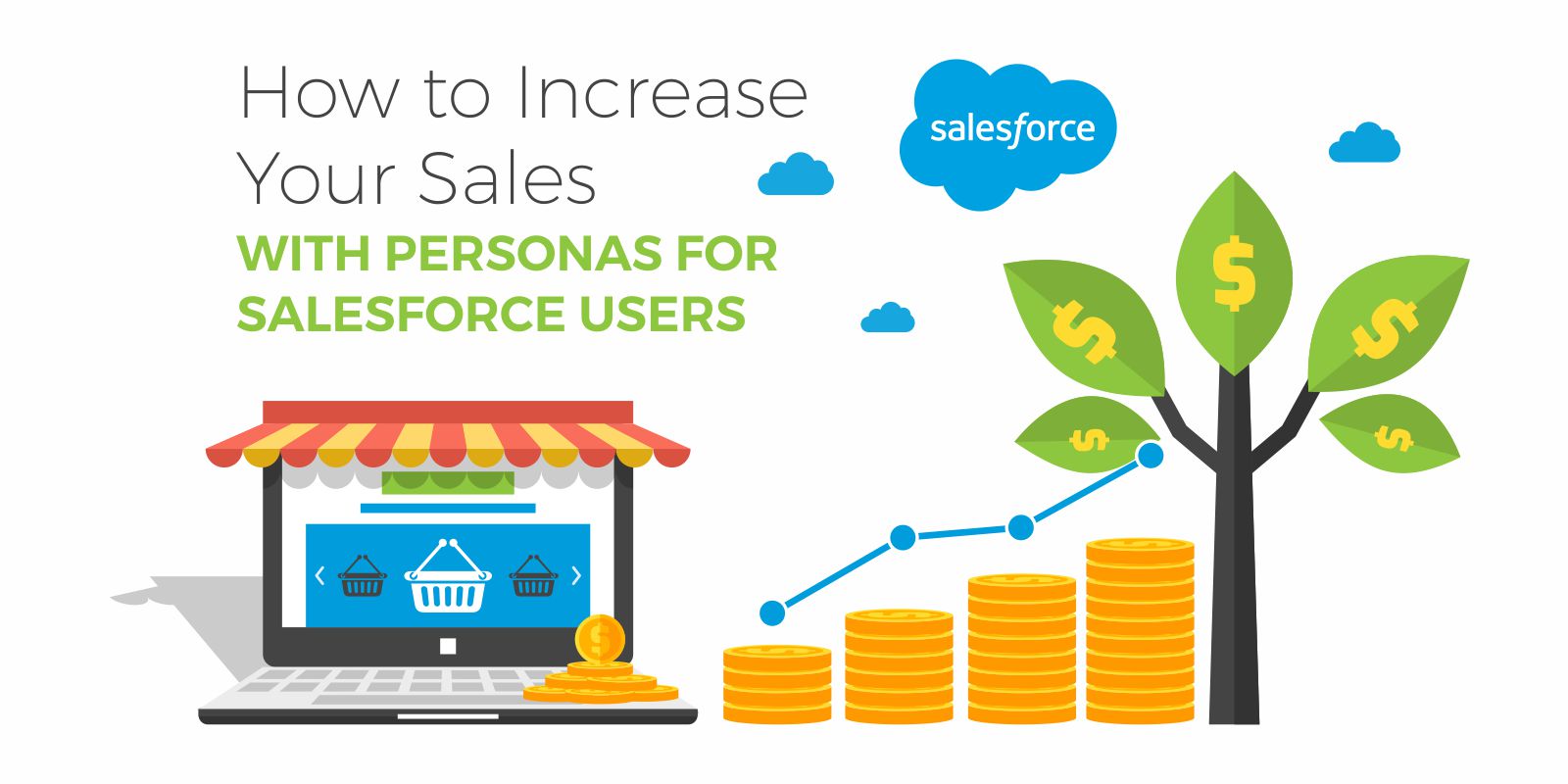Most companies struggle to make adequate sales.
Startup businesses with fewer resources struggle the hardest, because they’re forced to lump sales and marketing duties into a single role – the role of salesperson. But then, as these companies grow and scale up, they realize the key to maximizing sales is to articulate their processes. Have marketing professionals who can focus on marketing, so the salesperson can actually make sales.
The best sales processes are multi-step. They have systems for generating leads, closing sales, servicing existing customers, and building a community to capitalize on earlier investments. Salesforce user personas let you integrate the users in your organization into a cloud-based team, so they can work anywhere, anytime, for maximum results.
The Caveat in Customizing for Salesforce Users
While Salesforce is the leader in cloud-based CRM software, it doesn’t come fully customized. Ideally, dashboards should be configured for every role that’s involved in using Salesforce in your business.
For example, while salespeople use Salesforce for one thing, marketing people need different information from Salesforce. Backend and supply chain folks need another set of information. Taking the time to set up a dashboard that’s unique to the different roles that access Salesforce can make your employees’ jobs easier and aid in adoption of the CRM. (Hint: The more employees who adopt Salesforce and use it on a regular basis, the higher your ROI will be.)
The complexity of your Salesforce implementation increases with the number of roles you expect to need access to your CRM and the number of activities you need to do with it. The more employees, the more complexity. So, poor planning could quickly lead to mass confusion.
You could end up with over-customized dashboards or, worse, an under-customized and under-utilized system. Either way, your costs could spiral out of control and Salesforce could become a liability rather than an asset.
The Magic Behind Streamlining Salesforce with Personas
The key to solving the user customization problem is by using personas for Salesforce users. A persona is a fictitious representation of a group of users. The persona is built based on the goals, motivations, pain points, and behaviors of the users within that group. By grouping users who will be using Salesforce in similar ways, you can avoid wasting resources customizing a dashboard for each individual user.
Using personas lets you build on previous work. You start by understanding that group’s core tasks and job functions, which will reveal each user’s priorities and what functionality they need from Salesforce in order to do their jobs effectively. When you add new features, having a sort of shorthand description of what defines that group will help you figure out how the new features are likely to affect those users.
To get you started, Salesforce has created a set of personas for each of their solutions, including Sales cloud, Service cloud, Marketing cloud and Community Cloud.
The Sales Leader
The Sales Leader is the persona best suited to your sales manager. This persona is focused on the tasks of sales management, including sales coaching and training sales reps.
On an average day, their Salesforce activities would include:
- Viewing dashboards and creating reports and dashboards
- Customizing Salesforce and administration
- Interacting with colleagues in the cloud
Since Sales Leaders are often paid a bonus rather than commission, usually they want to make sure their team meets quota and stays motivated. This persona includes tasks that make it easier to track team progress.
The Deal Closer
The Deal Closer persona is like your typical outside salesperson. They spend their mornings preparing for sales calls and their afternoons holding meetings. Other duties may include giving demos, preparing quotes, and writing proposals. They also send contracts after closing deals with new customers.
When working in Salesforce, they’re most likely to:
- Enter data on calls, notes, and emails
- Add updates to existing prospects and customers
- Create new prospect and client records
- Review and work through their sales to-do list
As outside salespeople, Deal Closers are rarely in the office. They don’t need management watching over them, because their role is typically commission driven. Their goal is to spend most of their time in front of a customer, making a sale and a commission. The Deal Closer persona is geared towards these activities and goals.
The Data Expert
The most common activity of the Data Expert persona is sales forecasting. This Salesforce user spends a few hours a day managing the sales process and working with tools inside Salesforce.
Data Expert activities in Salesforce include:
- Viewing dashboards and creating reports
- Customizing Salesforce as new needs arise or new features become available
- Using Salesforce for general administration duties
Data Experts rarely meet with customers and their role does not typically include tracking and making a quota. Therefore, their dashboard and functionality may look very different from other sales-related personas.
The Pipeline Builder
Pipeline Builders kickstart the whole sales process by generating leads. They dig up new leads, handle inbound leads, and help sales pre-qualify existing leads. The other half of their day is spent looking for new opportunities in existing accounts.
Their main activities inside Salesforce include:
- Data entry of prospects and customers
- Updating information on prospects and customers
- Logging calls, emails, and notes
Most Pipeline Builders work behind the scenes. They rarely meet with the leads they find in person. Their role often comes with an activity quota and sales targets they need to meet, which make good reporting a very important part of this Salesforce persona.
Trusted Advisor
The Trusted Advisor persona would be a good fit for an account manager. This role spends half their day managing existing customer accounts. They also typically try to upsell existing customers and grow the business with repeat sales. For larger accounts, they’re on the lookout for new opportunities.
Their main activities inside Salesforce include:
- Updating prospects and customer information
- Entering activities such as notes, calls, and emails
- Logging new prospects and customers
Trusted Advisors meet with customers in person and over the phone. Their role is focused on building relationships, so they typically don’t have to worry about meeting a quota. The dashboard and activities for this persona will include some sales activities but also tracking features to make following up easier.
Get Your Salesforce Users Ready
Whether your business is large or small, personas for Salesforce users help you increase your ROI. They reduce the complexity of your implementation by bringing attention to key tasks and job functions, so you can create a streamlined sales process and a cloud-ready team.
Whether you plan to implement Salesforce yourself or you want some expert help to make sure it goes smoothly, give RTS Labs a call and take advantage of our free Salesforce implementation consultation. The goal: To see if we can increase your ROI by as much as 50%. There’s no obligation, and if you get even one new idea from the conversation, it could be worth your time.
Request your free Salesforce consultation with the RTS Labs Salesforce team.






